Contents
- Key Takeaways
- Part 1: Determining Power Requirements for a Lithium Battery Bank
- Part 2: Understanding Lithium Battery Chemistry for Power Banks
- Part 3: Balancing Size, Weight, Portability and Compliance in Lithium Battery Packs
- Part 4: Cost, Warranty, and Brand Reputation in Lithium Battery Selection
- FAQ
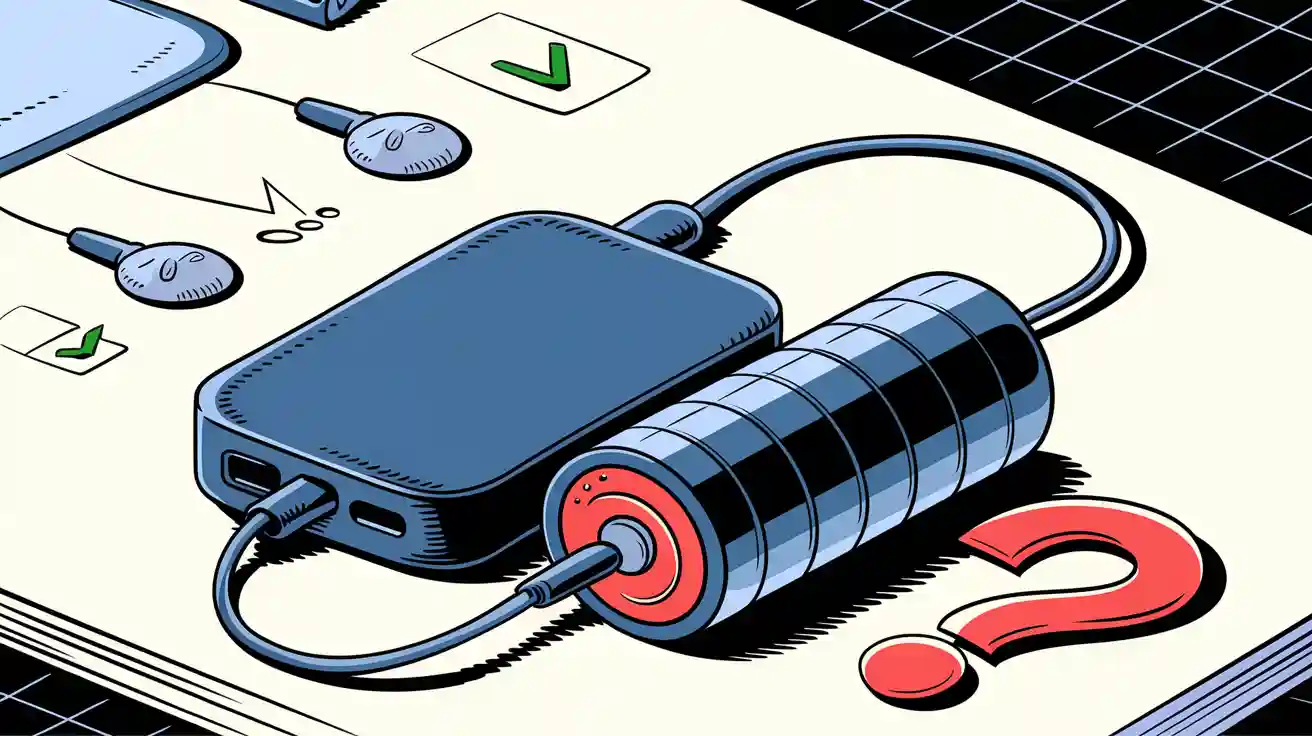
Selecting the right lithium battery for power bank applications ensures optimal performance, safety, and reliability. Lithium-ion batteries with cobalt cathodes deliver twice the energy density of nickel-based options, making them ideal for portable designs. Their stable voltage and low maintenance enhance longevity, supporting up to 1,000 cycles. For industrial usage, balancing energy density, safety, and cost is crucial to meet demanding requirements.
Tip: Consider lithium battery chemistries like LCO for lightweight designs, or LiFePO4 for durability and safety in outdoor applications. Explore sustainable solutions here.
Key Takeaways
Figure out how much energy your devices need. This helps you pick a lithium battery with enough power to work well.
Pick the right type of lithium battery for your use. For lighter designs, go with LCO; for safer and longer-lasting ones, choose LiFePO4.
Focus on quality and safety when choosing a maker. Well-known brands give better performance, last longer, and offer good support.
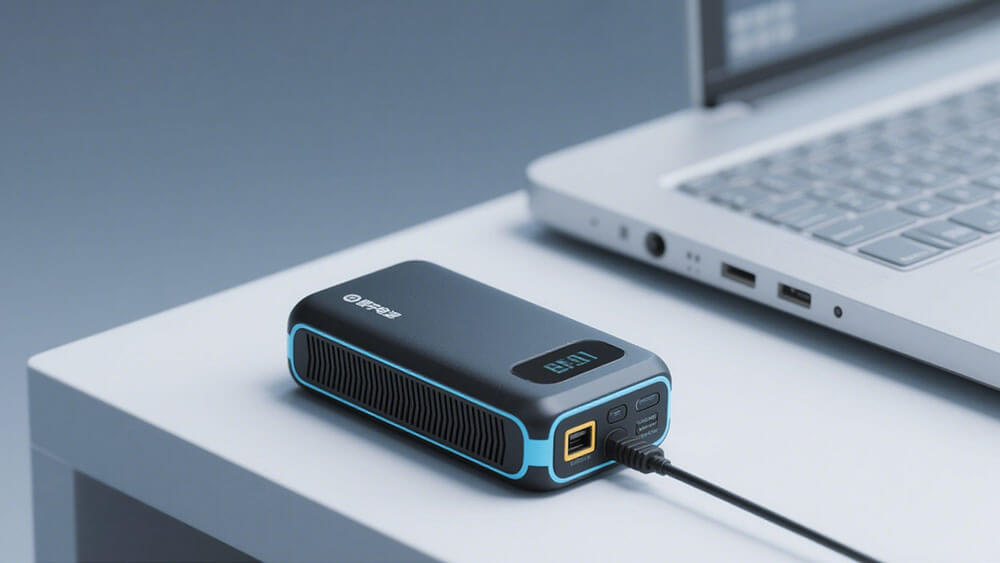
Part 1: Determining Power Requirements for a Lithium Battery Bank
1.1 Evaluating Capacity (mAh) for Power Bank Applications
Battery capacity plays a critical role in determining the suitability of a lithium battery for power bank applications. To calculate the required capacity, you should assess the daily energy load of your devices. Start by identifying the electrical load of each device in amps or watts. Then, sum up the amp-hour requirements to determine the total energy demand. Example Calculation:
Smartphone: 3,000mAh per charge × 2 charges/day = 6,000mAh
Tablet: 5000mAh per charge × 1 charge/day = 5,000mAh
Total Daily Requirement: 6,000 + 5,000 = 11,000mAh
Recommended Power Bank Capacity: 11,000mAh × 1.2 (efficiency buffer) = 13,200mAh
Device | Average Consumption per Charge | Recommended Power Bank Capacity |
|---|---|---|
Smartphone | 3,000-4,000mAh | 5,000-10,000mAh |
Laptop | 8,000-12,000mAh | 20,000mAh+ |
Drone | 5,000-8,000mAh | 15,000-20,000mAh |
Battery capacity also influences the number of cycles a power bank can sustain. Higher-capacity lithium battery packs typically offer longer cycles, enhancing performance and longevity. When selecting a battery, ensure it aligns with your usage patterns and charging needs.
1.2 Ensuring Voltage Compatibility with Power Bank Designs
Voltage compatibility is essential for the efficiency and safety of power bank designs. Most power banks operate at a standard output of 5V, suitable for charging smartphones and tablets. However, the internal lithium battery requires a voltage reduction to 3.7V for effective charging. Devices like laptops, which demand higher voltages, require power banks with adjustable voltage settings.
Voltage mismatches can impact charging speed and device compatibility. To optimize performance, ensure the output voltage and current align with your device’s requirements. Protection circuits within the power bank also regulate voltage to prevent overcharging or overheating.
1.3 Assessing Power Needs Based on Usage Scenarios
Different usage scenarios dictate varying power requirements. For example, compact power banks with capacities between 1,000–5,000 mAh are ideal for smartphones, while larger capacities above 15,000 mAh cater to outdoor or industrial applications. The table below illustrates how capacity ranges influence market demand and applications:
Capacity Range (mAh) | Application Influence |
|---|---|
1,000–5,000 | Smartphones |
5,001–10,000 | Wearable Devices |
15,001–20,000 | Outdoor Equipment |
Understanding your specific needs helps you create a lithium battery bank that balances battery capacity, cycles, and performance. This ensures your power bank delivers reliable energy for its intended purpose.
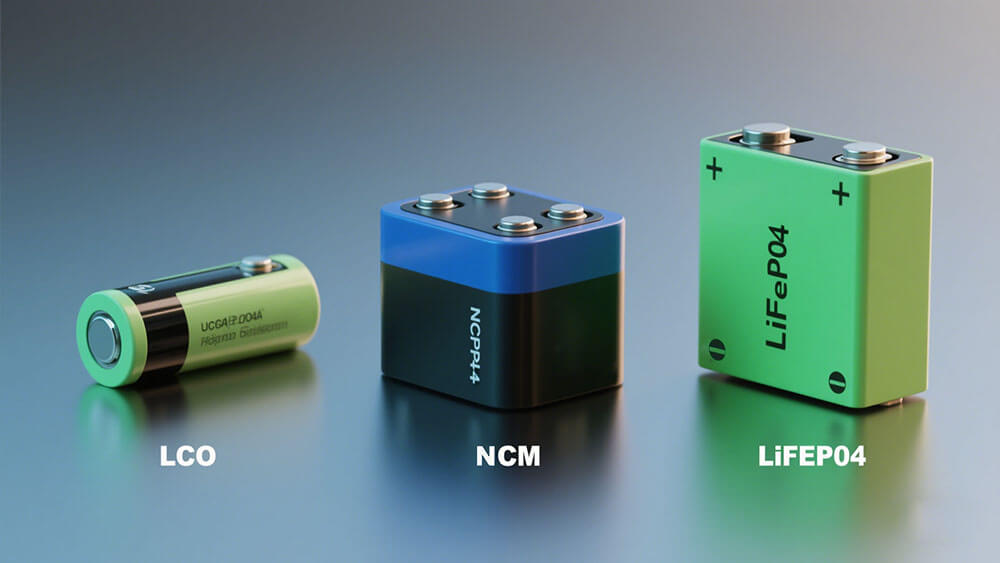
Part 2: Understanding Lithium Battery Chemistry for Power Banks
2.1 Comparing Lithium Battery Types: LCO, NCM, and LiFePO4
Lithium battery chemistry significantly impacts the performance and efficiency of power banks. Among the most common types, lithium cobalt oxide (LCO), lithium nickel cobalt manganese oxide (NCM), and lithium iron phosphate (LiFePO4) stand out for their unique characteristics.
Battery Chemistry | Energy Density | Cycle Life | Safety Features | Applications |
|---|---|---|---|---|
Lithium cobalt oxide (LCO) | High | Moderate | Good | Lightweight power banks |
Lithium nickel cobalt manganese oxide (NCM) | High | Moderate | Improved | High-performance power banks |
Lithium iron phosphate (LiFePO4) | Moderate | High | Excellent | Outdoor and industrial power banks |
LCO batteries excel in energy density, making them ideal for compact designs. NCM offers a balance of energy density and safety, suitable for fast-charging applications. LiFePO4 prioritizes safety and longevity, making it the best choice for outdoor or high-capacity power banks.
2.2 Pros and Cons of Different Chemistries for Power Bank Performance
Each lithium battery type offers distinct advantages and trade-offs. LCO batteries provide high energy density, enabling sleek and portable designs. However, they require robust safety mechanisms due to lower thermal stability. NCM batteries deliver balanced performance, supporting fast charging while maintaining safety. Their moderate cycle life makes them versatile for various applications. LiFePO4 batteries stand out for their exceptional safety and long lifespan, though their lower energy density results in bulkier designs.
Note: The choice of lithium battery chemistry should align with your power bank’s intended application, balancing energy density, safety, and cost.
2.3 Selecting the Best Lithium Battery Pack for Specific Applications
Choosing the best lithium battery pack involves evaluating several criteria. These include power requirements, battery chemistry, lifespan, safety features, size, weight, and cost. The table below outlines these factors:
Criteria | Description |
|---|---|
Power Requirements | Assess the capacity (Ah) and voltage (V) needed for your device to ensure compatibility and efficiency. |
Battery Chemistry | Different chemistries (LiFePO4, LCO, NCM) offer various advantages for specific applications. |
Lifespan | Evaluate cycle life and depth of discharge to determine long-term usability and performance. |
Safety Features | Look for built-in safety mechanisms like Battery Management Systems and thermal management systems. |
Size and Weight | Consider the physical dimensions and weight for portability and application suitability. |
Cost | Analyze total cost of ownership, factoring in lifespan and efficiency against initial purchase price. |
For lightweight and portable power banks, LCO batteries are ideal. For fast-charging and high-performance needs, batteries offer a balanced solution. For outdoor or industrial applications, LiFePO4 batteries provide unmatched safety and durability.
Tip: Partnering with a trusted manufacturer ensures access to high-quality lithium battery packs. Explore custom solutions here.
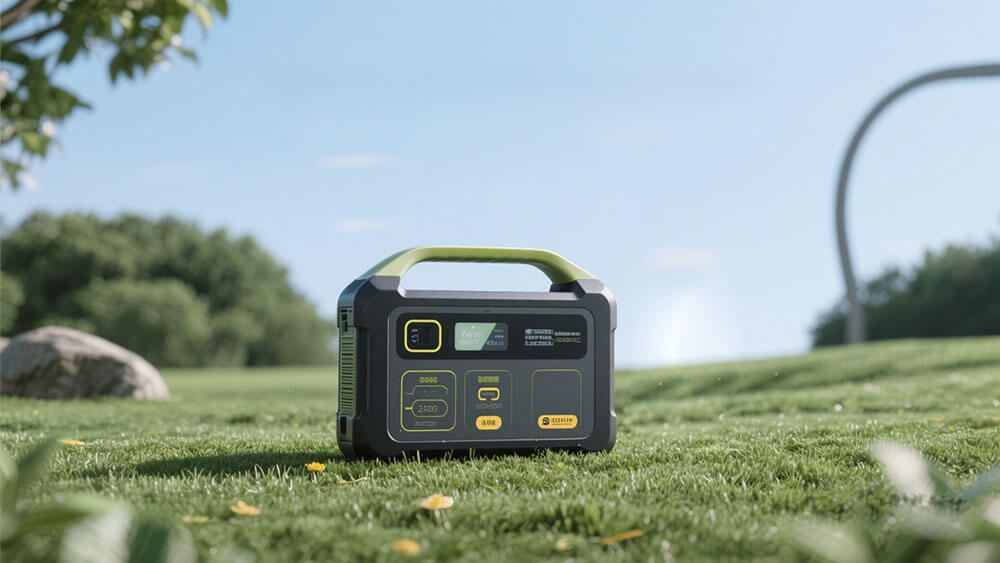
Part 3: Balancing Size, Weight, Portability and Compliance in Lithium Battery Packs
3.1 Optimizing Size and Weight for Portable Power Banks
Optimizing the size and weight of lithium battery packs is essential for creating portable power banks. Smaller and lighter designs enhance convenience, especially for users who need energy storage battery solutions during travel or outdoor activities. However, larger models often provide higher energy storage capacity, making them suitable for industrial or extended-use scenarios.
Compact power banks are easier to carry and store, improving user comfort during prolonged use.
Larger designs accommodate higher-capacity lithium battery packs but may compromise portability.
Advances in lithium battery technology, such as improved energy density, allow manufacturers to reduce size without sacrificing performance.
A well-balanced design ensures that your power bank meets both portability and energy storage needs, enhancing its overall efficiency and usability.
3.2 Practical Considerations for Custom Lithium Battery Bank Designs
Customizing power banks requires careful planning to meet specific application requirements. Key considerations include:
Consideration | Details |
|---|---|
Voltage Requirements | Lithium technologies typically operate at 3.6 volts per cell; series connections increase voltage. |
Cell Configuration | Arrange cells in series for voltage or in parallel for increased capacity and current. |
Capacity Calculations | Calculate capacity in amp-hours to determine run time based on current draw. |
Safety Measures | Ensure proper ventilation to prevent hydrogen gas accumulation in closed systems. |
Additionally, matching cells within a battery pack prevents damage caused by weaker cells. Using nickel strips for connections enhances durability and reduces resistance. These measures ensure that your lithium battery bank delivers reliable performance while maintaining safety.
3.3 Addressing Trade-offs Between Portability and Capacity
Balancing portability and capacity is a critical aspect of lithium battery pack design. Higher capacity often requires larger physical dimensions, which can reduce portability. Conversely, compact designs may limit energy storage capacity.
Aspect | Description |
|---|---|
Trade-off | Users must balance higher capacity with size and weight limitations. |
Physical Size Impact | Larger dimensions accommodate higher capacity, while smaller sizes prioritize portability. |
Battery Technology | Advances in battery chemistry improve energy density, but higher capacity still requires more space. |
To address these trade-offs, you should consider the intended application. For lightweight and portable power banks, prioritize compact designs with moderate capacity. For industrial or outdoor use, opt for larger lithium battery packs that offer extended energy storage capacity.
3.4 Ensuring Compliance with Industry Standards for Power Banks
Compliance with industry standards ensures the safety and reliability of power banks. Regulatory frameworks like UL 4200A and Hazardous Materials Regulations (HMR) establish guidelines for testing, labeling, and transportation.
Regulation/Standard | Description |
|---|---|
16 CFR Part 1263 | Enforces requirements of Reese’s Law, making compliance mandatory for lithium battery products. |
UL 4200A | Ensures safety and performance of battery compartments in lithium battery-powered products. |
General Certificate of Conformity | Certifies compliance with CPSC regulations, detailing product information and testing records. |
Hazardous Materials Regulations (HMR) | Regulates transportation of lithium batteries, including testing, labeling, and packaging requirements. |
Adhering to these standards protects users and enhances the credibility of your lithium battery bank. Partnering with trusted manufacturers ensures compliance and access to high-quality energy storage battery solutions. Explore custom solutions here.
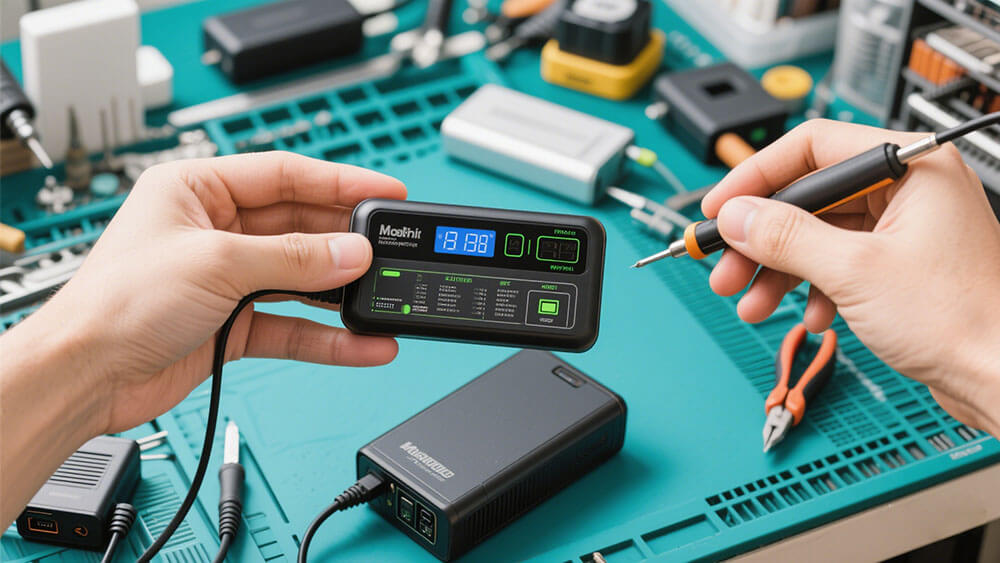
Part 4: Cost, Warranty, and Brand Reputation in Lithium Battery Selection
4.1 Evaluating Cost-Effectiveness for Bulk Lithium Battery Purchases
When purchasing power banks in bulk, cost-effectiveness becomes a critical factor. While lower-priced options may seem appealing, they often compromise on quality, leading to reduced performance and shorter lifespans. Investing in high-quality lithium battery packs ensures better materials, higher energy density, and longer cycle life, ultimately reducing long-term costs.
To evaluate cost-effectiveness, consider the total cost of ownership (TCO). This includes the initial purchase price, maintenance expenses, and replacement frequency. For instance, power banks with LiFePO4 chemistry offer exceptional durability, lasting up to 2,000 cycles, which minimizes replacement costs. Additionally, partnering with trusted manufacturers like Large Power provides access to custom solutions tailored to your specific needs. Explore more here.
4.2 Importance of Warranty and After-Sales Support for B2B Clients
A robust warranty reflects the manufacturer’s confidence in their product’s durability. For B2B clients, this assurance is crucial, as it reduces operational risks and ensures uninterrupted performance. Look for lithium battery packs with extended warranties and comprehensive after-sales support. Efficient customer service can resolve issues quickly, minimizing downtime and enhancing productivity.
For example, brands offering warranties of three years or more often use superior materials and manufacturing practices. This not only ensures reliability but also builds trust. Additionally, responsive after-sales support provides technical assistance, helping you optimize the performance of your lithium power bank.
4.3 Choosing Trusted Manufacturers for Reliable Power Banks
Selecting a reputable manufacturer is essential for obtaining reliable power banks. Large Power specializes in custom lithium battery solutions, ensuring compliance with industry standards and superior performance.
Reputable manufacturers prioritize safety, energy density, and longevity in their designs. They also adhere to sustainable practices, reducing environmental impact. To ensure reliability, research customer reviews and evaluate the brand’s track record. A trusted manufacturer not only provides high-quality lithium battery packs but also offers ongoing support, ensuring your investment delivers long-term value.
Tip: Avoid cheaper alternatives that may lack necessary safety features or durability. Partnering with a trusted brand ensures better performance and fewer defects.
Selecting the right lithium battery for your power bank involves evaluating capacity, chemistry, safety, and cost. Each factor directly impacts performance and reliability. For instance, LCO batteries suit lightweight designs, while LiFePO4 excels in safety and longevity for outdoor applications. Aligning specifications with application needs ensures optimal results.
Parameter | Description |
|---|---|
Current and expected impacts on market dynamics. | |
Raw material scenario | Analysis of supply versus price trends in the market. |
Regulatory scenario | Overview of current regulations and expected developments affecting the industry. |
Current capacity | Assessment of existing market capacity and expected additions up to 2027. |
Weights assigned to parameters | Quantification of the impact of various factors on market momentum. |
Forecasting methods | Use of econometric models for short-term and technology market models for long-term analysis. |
Demographic analysis | Individual analysis of different demographics to provide detailed market insights. |
Tip: Prioritize quality and safety features to enhance long-term performance. Partnering with trusted manufacturers like Large Power ensures compliance, reliability, and access to custom solutions tailored to your needs.
FAQ
1. What is the ideal lithium battery chemistry for fast-charging power banks?
NCM batteries are ideal for fast-charging power banks. They balance energy density, safety, and performance, making them suitable for high-power applications.
2. How do I calculate the required capacity for my power bank?
Add the energy demands of your devices in amp-hours. Choose a lithium battery bank with a capacity that exceeds this total to ensure reliable performance.
3. Are lithium batteries safe for outdoor power banks?
Yes, LiFePO4 batteries are highly safe for outdoor use. They offer excellent thermal stability, long lifespans, and resistance to overcharging or punctures.
4. How to check if a power bank is overcharging?
Opt for models with auto-shutoff and LED indicators (e.g., RAVPower PD Pioneer).
5. Are budget power banks safe?
Avoid uncertified brands. Check for UL/FCC marks and user reviews. Partnering with trusted manufacturers like Large Power ensures compliance, reliability, and access to custom solutions tailored to your needs.





